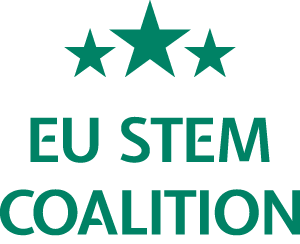EU STEM Coalition: Taskforce Meeting - Input STEM approaches Baltic Assembly
EU STEM Coalition: Taskforce Meeting - Input STEM approaches Baltic Assembly
Date:
24 March 2022 to 25 March 2022
Country:
Latvia
City & meeting location:
Parliament of Latvia (Riga)
Short summary:
On March 25, 2022 the EU STEM Coalition was requested to provide input and recommendations on the topic of skills mismatch in STEM in the joint meeting of the Committees of Education, Science and Culture and Economics, Energy and Innovation of the three Baltic States (Baltic Assembly).
Objective of the meeting:
To provide input and recommendations on the topic of skills mismatch in STEM in the joint meeting of the Committees of Education, Science and Culture and Economics, Energy and Innovation of the three Baltic States.
Description:
The Baltic Assembly is an international organisation for cooperation among the parliaments of the Republic of Estonia, the Republic of Latvia and the Republic of Lithuania. The overarching goal of the Baltic Assembly is to coordinate cooperation between the national parliaments of Estonia, Latvia, and Lithuania. The Baltic Assembly considers issues and various projects which are of interest to the members of the national delegations and the member states; adopts decisions in compliance with the principles of equality, mutual benefit and unanimity; and develops cooperation with other regional, international, and inter-parliamentary organisations.
For the joint meeting of the Education, Science and Culture Committee and Economics, Energy and Innovation Committee of the Baltic Assembly (representing the parliaments of the three Baltic states) the EU STEM Coalition was requested to provide an introductory report outlining teh main trends and challenges in STEM and ICT in Europe and the Baltic states specifically, and provide recommendations to the committees based on European best practices.
The presentation was given by Geert Asselbergs (coordinator) and covered:
- A brief overview of the network, international cooperation and results of actions
- Problem setting and definition of skills mismatch in STEM
- Common success factors identified in the Member States
- ICT and digital skills
After briefly outlining the network as well as some case studies of international best practice sharing (e.g. Danish Technology Pact, Hungarian STEM platform), an overview of the instruments and an overview of relevant EU policy objectives in which the network was included a brief overview of the various relevant policy areas was presented (see presentation).
Following the introduction an overview of the trends and developments in the Baltic states was presented. What stands out is the differences in the trends in STEM and ICT uptake, gender equality and ICT. Estonia in particular being one of the strongest performers in Europe. This is supported by the comprehensive portfolio of government-funded actions implemented through the Estonian Research Council in this area.
The second part of the presentation focused on the common success factors in addressing skills mismatch and relevant case studies. These include
- Regionalised approaches
- Reliance on public-private partnerships and multi-stakeholder approaches
- Chain approach (coordination between interventions in different education levels)
To illustrate these factors a case study of the Netherlands was presented highlighting both the strategic / policy dimension (Technology Pact), regionalised implementation schemes (Regional Investment Fund VET) and reliance on (regional) public-private partnerships (Centres of Vocational Innovation).
The final part of the presentation focus on the topic of digital skills and the question whether they should be separated from the STEM definition (which includes the ICT education field) as a horizontal priority. The 'Technology Comprehension' pilot in Denmark was presented as a case study of a Member State redesigning the way that Informatics education is delivered in primary and lower secondary education (see presentation). The Informatics Reference Framework for School was presented in relation to the topic of ICT skills as a horizontal priority (relevant for facilitating learning in other education fields as well.
The presentation was followed by an extensive discussion with the Committee members.





